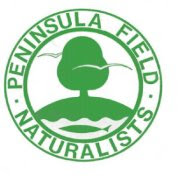After ticking as many Spring migrants as possible during their stopover in the peninsula, I usually spend part of the month of June hitting specific spots for species that have chosen the Niagara Region to raise young. From the southern shoreline of Lake Ontario to the northern edge of Lake Erie, I have a few locations I return to annually.
On June 2, Jean and I searched for two target species. The Carolinian Forest of St. John's Conservation Area was our first stop and we were looking for a FOY Scarlet Tanager. A great view of a male Indigo Bunting but the species list after walking the trails for almost 1.5 hours was limited and without a Scarlet Tanager tick. Dragonflies and damselflies were plentiful especially the Common Whitetails at the south end of the trout pond.
On to the spot where Jean and I observed our lifer Hooded Warbler last year. The Lake Erie shoreline is teeming with summer cottages owned by U.S. citizens from western New York and in order to reach the cottages, roads are required. One private road, west of Crystal Beach, allows access to a marshy woodlot filled with Skunk Cabbage. It appears we can count on this gravel road for an annual Hooded Warbler tick. Within no time, we observed a male Hooded Warbler pop out from the undergrowth to make its way to a nearby perch and sing its ta-wit ta-wit ta-wit tee-yo song loudly.
Before returning to St. Catharines, we stopped at another gem managed by the Niagara Peninsula Conservation Authority (NPCA). Mud Lake Conservation Area offers a variety of habitat for birding. We walked through wetland, field and woodland during our hike. Best ticks were a FOY Field Sparrow, Marsh Wren (#230 for the county list) and a Sora. Worst ticks were literally, ticks!
After completing our first survey for the Marsh Monitoring Program on June 16, we stopped at Niagara Shores in Niagara-on-the-Lake. Parks Canada owns this small parcel of land with views of Lake Ontario and a woodlot that yielded a lifer Yellow-bellied Flycatcher in August of 2009. Jean and I visit this park a few times a year and in late May or early June, we add Bank Swallow to the year list. The swallows were not the only nesting species we found on this warm day. In one of the two conifers by the parking area, we found a pair of Pine Warblers raising 2 young. Well, the female was busy feeding her brood. The male seemed content to sing the whole time we were there.
During the week of the 18th we were on vacation and another attempt at ticking Scarlet Tanager in St. John's was planned. Three species of woodpecker, two species of vireo, a singing redstart and a Ruby-throated Hummingbird for the list but the secretive behaviour of the tanager continued so we moved on to Short Hills Provincial Park. I was hoping to find a Yellow-bellied Cuckoo in the willows near the Roland Road entrance. Based on previous visits, the further you walk into the park, the less species you find so we simply explore a small area using the Palaezioc Path, a gravel trail that allows people with disabilities to enjoy the park. The trees were without cuckoos but we did find a FOY Blue-winged Warbler. A welcomed addition since we missed this species last year. The possibility of beating our 2011 total was getting better.
Heading back to the parking area, I noticed an odd twig at the top of a post. I thought it very strange that a twig would be attached to a wooden post so I brushed it with my finger. It had some give to it but it did not move. This twig-like thing was a caterpillar and based on our best educated guess, a member of the Genus Plagodis.
We had some great news later in the week. Our scope had been repaired and was ready for pick up. We headed up to Guelph with a plan to stop in Flamborough (Hamilton County) on the way home. A number of of Prairie Warbler sightings had been reported recently and the location labelled "Flamborough--Westover Tract" on eBird Canada was too close to Highway 6 to pass on the chance of a lifer tick.
Most of the land is privately owned and the local farm animals offered no assistance so we looked for the warbler from the concession road. I studied the song (a rapid series of ascending buzzes) of the Prairie Warbler but hearing it from 500 metres away seemed highly unlikely. We would also need to view the bird to count the lifer tick. Looking at the observations on eBird recently, it appeared some walked along the gas company's roadway to get the tick but at the time I chose not to venture onto private property. No worries. The opportunity may arise again, perhaps in another location. We had one more spot to visit before returning to St. Catharines.
A bunch of rednecks had decided to join a yacht club on the northern shore of Lake Ontario. Rednecks? Yacht club? This we gotta see. We had our scope back so it was the perfect opportunity for some digiscoping.











No comments:
Post a Comment